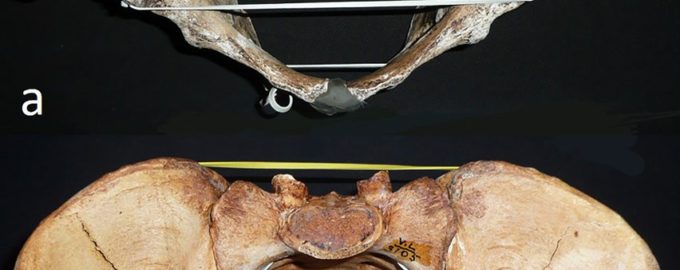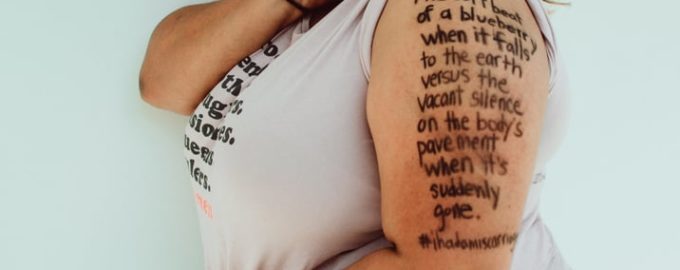The World Health Organization (WHO) recommends that infants obtain all of their nutritional requirements solely from breast milk for the first six months of their lives. After that age, the WHO suggests to continue breastfeeding until the child is at least 2 years old while introducing other foods into his or her diet.
Why is breast milk and breastfeeding the preferred choice?
The Benefits of Breast Milk and Breastfeeding
According to the American Pregnancy Association (APA), breast milk offers the growing child a variety of nutrients that include:
- Protein for “quick and easy digestion” and reduced likelihood of infections
- Carbohydrates that reduce unhealthy bacteria and aid in the absorption of the other vitamins in breast milk
- Fat for proper brain and nervous system development
- Multiple vitamins (A, B, C, D, E, and K), all of which contribute to the baby’s overall health and well-being
Essentially, breast milk offers many nutrients that help “protect against infections and reduce the rates of later health problems including diabetes, obesity, and asthma” says the APA, adding that the act of breastfeeding itself offers benefits too. It helps stop the bleeding after delivery, reduces the risk of breast and ovarian cancers, and strengthens the mother-child bond.
That’s why many health experts are so intent on making sure a mother has access to adequate care during the breastfeeding process. In order for her baby to get the proper nutrients through breast milk, the mother must get them first so she is able to pass them down.
But what happens if the breastfeeding mother ingests other substances? More specifically, what is the effect of various drugs—both legal and illegal—on lactation and breast milk?
Effects of Drugs on Lactation and Breastfeeding

Because nutrients in the breast milk come from the nutrients consumed by the mother, the same can be said about any other substances she ingests. Simply put: if a mother puts drugs of any kind in her body, they’re likely to be passed along to the nursing baby.
Therefore, specific recommendations exist regarding each drug—some of them legal and some of them illegal—and its consumption by a breastfeeding mother. Let’s go through a few of the most common now.
Caffeine
Caffeine provides a lot of benefits. According to Michigan State University, these include protection of brain cells, reduced risk of gallstones, prevention of various heart illnesses, and the ability to relieve headaches. But what does it do to breast milk?
Research has discovered that peak concentrations of the caffeine within the breast milk occur 60 minutes after ingesting it. The American Academy of Pediatrics (AAP) also says that less than 1 percent will transfer to breast milk.
Because this amount is so low, the AAP states that consuming caffeine is okay while breastfeeding, though this organization does recommend that it be consumed in moderation. If you spread your intake over the entire day, that helps as well.
However, if you notice that your baby is irritable or fussy, the AAP suggests that you try cutting down on your caffeine to see if that helps. This may involve limiting it for one hour before feedings so less is passed along to your baby.
Keep in mind also that caffeine comes from a variety of sources beyond coffee, tea, or soda. It is also in chocolate and many headache medications too.
Alcohol

Another drug sometimes consumed by new mothers is alcohol. But what does science have to tell us about alcohol and breast milk?
One study published in the New England Journal of Medicine included 12 lactating women, each of whom consumed 0.3 grams of ethanol alcohol per kilogram of body weight. For comparison purposes, the alcohol content of a few standard drinks includes:
- Beer, 12 ounces – 5 percent alcohol
- Wine, 5 ounces – 12 percent alcohol
- Liquor, 1.5 ounces – 40 percent alcohol
Researchers discovered that after the mothers drank the alcohol, the odor of their breast milk became more intense for 30 minutes to one hour. Furthermore, the smell was the strongest when the alcohol content within the breast milk was at its peak.
This study also found that “the infants sucked more frequently during the first minute of feedings after their mothers had consumed alcohol… [but] they consumed significantly less milk.” Based on this, the researchers concluded that consumption of alcohol affects an infant’s feeding behaviors.
For reasons such as these, the National Institute on Drug Abuse (NIDA) suggests that nursing should be avoided for two hours after drinking. This way, any alcohol that has been consumed has adequate time to leave the mother’s body before potentially being passed on to the infant.
That being said, the NIDA also says that science has found that “alcohol does not increase a nursing mother’s milk production, and it may disrupt the breastfed child’s sleep cycle.” So, if you’re struggling with getting enough milk to adequately feed your infant or if he or she is having trouble sleeping, alcohol may be the culprit.
Nicotine

The Centers for Disease Control and Prevention (CDC) estimates that roughly 13.6 percent of the female population currently smokes. Additionally, those in the 25 to 44-year-old range smoke more than any other age group, with 45 to 64-year-olds coming in a close second.
Though the negative impact of smoking on the body includes major issues such as an increased risk of heart disease and cancer, there are other effects as well. For instance, people who smoke see a faster decline in vision, often have more wrinkles, and, for women in particular, tend to enter menopause at an earlier age.
Research has found that smoking while breastfeeding can also have negative consequences for the infant. For instance, one study published in the journal Pediatrics discovered that babies slept less if they consumed breast milk within 53.4 minutes of the mother smoking.
The American Cancer Society (ACS), adds to this topic, advising that smoking while breastfeeding has been linked to troubles with feeding, colic, and sudden infant death syndrome, or SIDS. Thus, they advise that not is the best choice. But if you do choose to smoke, they also indicate that “breastfeeding is probably still healthier for a baby than bottle feeding.”
Another concern is the mother’s exposure to secondhand smoke and whether the toxins can be transferred through the breast milk to the infant. Pediatrician and breastfeeding expert Jennifer Thomas says, “Even though trace chemicals from tobacco do pass into breast milk when a mom breathes in secondhand smoke, the disease-fighting cells in the breast milk outweigh the negative effect of those chemicals.” In other words, it’s more beneficial to the baby to have the breast milk, even if you’ve been around a smoker.
When talking about nicotine, there is also now the electronic cigarette, or e-cigarette for short. Midwife Clare Littler says that the long-term effects of these nicotine sources is not known, which is why she recommends vaping (the term used for smoking an e-cigarette) only after breastfeeding so it has a smaller impact on your breast milk.
Marijuana
Elizabeth Hartney, PhD, registered psychologist, professor, and Director of the Centre for Health Leadership and Research says that “cannabis is the most commonly used illicit drug among pregnant and breastfeeding women.” What effect does this have on a nursing infant?
According to research, tetrahydrocannabinol (THC), the psychoactive compound in marijuana, “is present in human milk up to eight times that of maternal plasma levels.” And because it has been found in the feces of infants exposed to it, it’s fairly clear that their bodies are absorbing and metabolizing this drug.
The Alcohol & Drug Abuse Institute (ADAI) adds that THC passed via breast milk can be “stored in the baby’s fatty tissue for several weeks.” This can create a variety of issues for the infant, ranging from experiencing tremors to poor feeding behaviors, and even decreased motor development.
Additional risks to breastfed children exposed to marijuana have been found to include:
- Impaired development of the brain and nervous system
- Decreased mental function
- Emotional regulation issues
- Hyperactivity
- Sudden infant death syndrome, or SIDS
Because of this, Hartney advises that a breastfeeding mother not use marijuana at all. The American College of Obstetricians and Gynecologists (ACOG) agrees. And if you do use marijuana, Hartney suggests foregoing breastfeeding altogether.
If you decide to stop using marijuana in order to breastfeed, Hartney suggests that you do so 90 days before you expect to start breastfeeding because this drug stays in your system for an extended period of time.
Opiates

The term “opiates” refers to a variety of drugs. A common street-level opiate is heroin. In the case of this drug specifically, some case studies have shown that a child breastfed by a mother addicted to heroin also became addicted to heroin themselves.
Children exposed to heroin through breast milk often have negative physical reactions as well. These include abdominal cramping, diarrhea, increased heart rate, and respiratory distress.
Some opiates are available legally, via a prescription. A couple of them are commonly prescribed to help individuals overcome their heroin addiction (methadone or buprenorphine), and others are generally referred to as painkillers that include codeine, hydrocodone, and oxycontin.
Though these prescribed opiates can be passed down to nursing babies too, guidelines published in Breastfeeding Medicine suggest that breastfeeding should continue with prescription opiates “regardless of dose.” However, use should be monitored by a physician who specializes in breastfeeding to ensure that it is safe for the baby. This is critical as some research has found that opioid toxicity can occur in breastfed infants.
The CDC adds that opiates in the form of codeine should either be avoided or taken in the lowest dosage possible during breastfeeding because they can potentially increase an infant’s risk of illness or even death.
Stimulants

The Substance Abuse and Mental Health Services Administration explains that stimulants “make people more alert [and] increase their attention.” Drugs that fall into this category include illegal options (cocaine and methamphetamine) and those that are prescribed (Ritalin, Adderall, and Dexedrine).
As with the other drugs, stimulants can be passed to the baby via the mother’s breast milk. Therefore, each one comes with its own recommendations with regard to breastfeeding.
For example, in regard to cocaine specifically, research published in the journal Canadian Family Physician says that even small amounts are dangerous to babies because they can’t adequately metabolize this drug. This can lead to agitation and irritability, but it can also lead to hypertension, tachycardia, and seizures.
For this reason, researchers recommend that mothers abstain from breastfeeding for at least 24 hours after using cocaine “to allow for drug elimination.” This helps limit the baby’s potential exposure to the drug.
Similar results have been found with methamphetamine use, which is also detectable in breast milk. In some cases, meth use during breastfeeding has led to the infant’s death. With regard to prescription stimulants, some studies have found that when they’re taken during breastfeeding, they aren’t known to cause any malformation issues, such as heart defects, finger abnormalities, or limb malformations. However, it is possible that they may negatively impact the mother’s production of milk when taken in larger doses, so it’s best to consult with a physician to ensure that you’re within a safe a healthy amount.
















